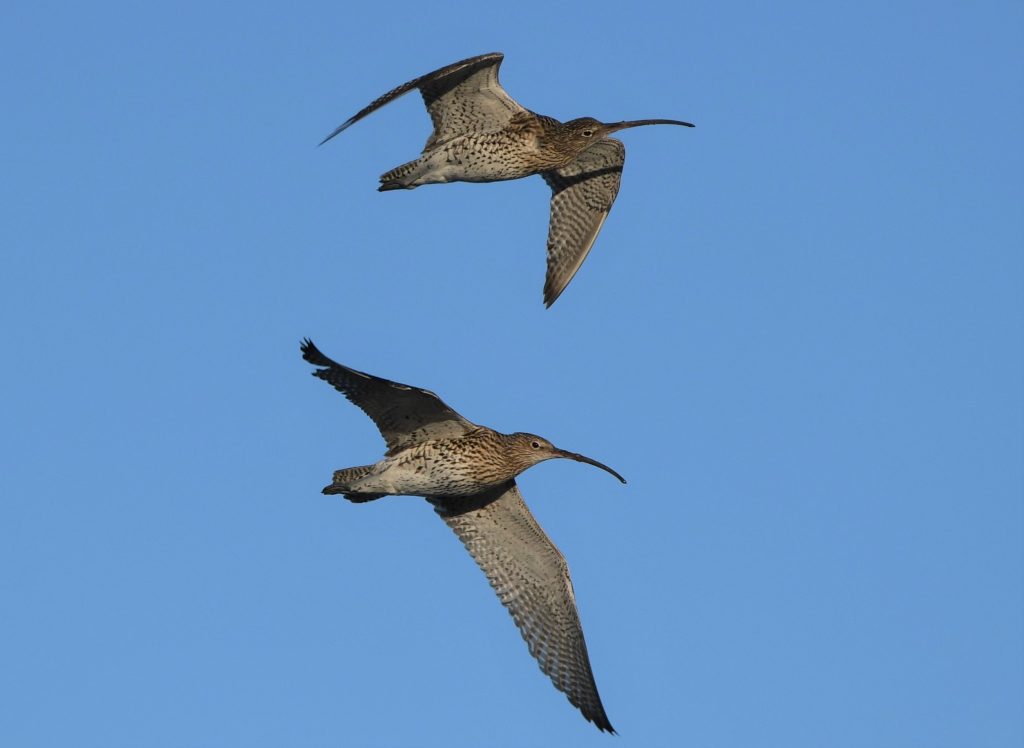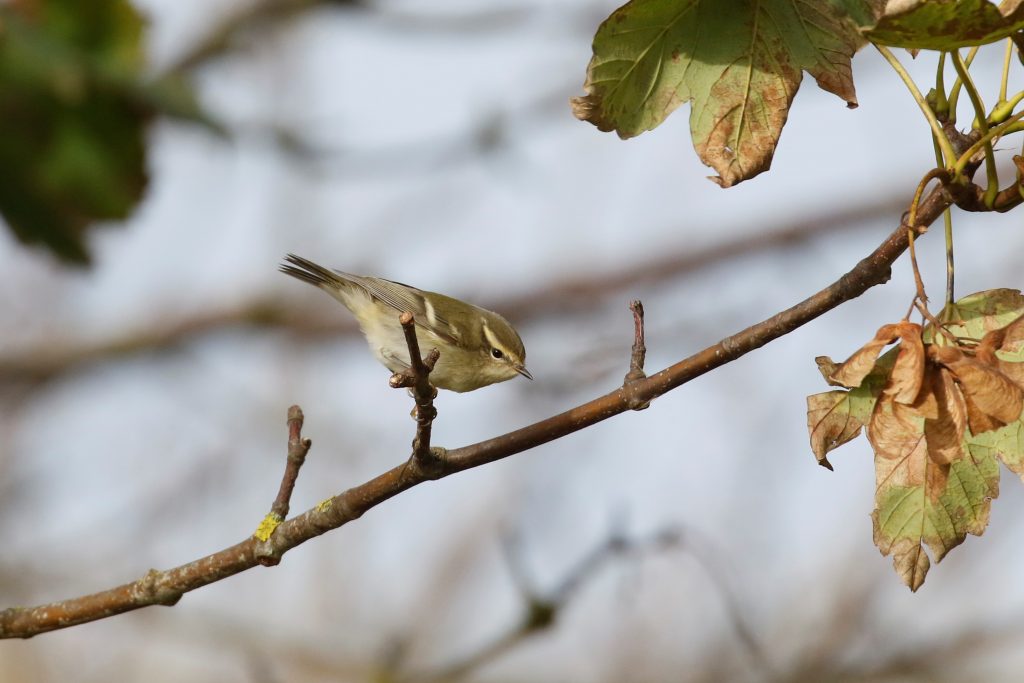
February Update
The conference took place over the weekend of January 30th/31st and was a great success, very well attended and received much praise.
On Saturday evening Sam Franks from the BTO gave a very informative and eye-opening account of the crisis which is the rapid decline in Curlew numbers in the UK. This was followed by a fascinating illustrated presentation by Simon and Niki from Inglorious Bustards about the spectacular annual migration which takes place over the Straits of Gibraltar.
SOS council member Mya Bambrick kicked off Sunday’s proceedings with an interesting session about the Cameron Bespolka Trust and the evening concluded with Nadia Shaikh from the RSPB talking about the challenges that are faced by people from minority ethnic groups in the world of conservation.
If you missed any or all of these talks, don’t worry – they were recorded and can be seen here.
≈≈≈≈
This year the SOS Annual Conference moves on-line with events taking place on the evenings of 30th and 31st January 2021. We are pleased to welcome guests who will deliver talks on the themes of Bird Migration on the 30th and Inclusivity in the World of Birding on the 31st.
We have five excellent speakers lined up for you over two nights.
The first evening of the conference will focus on the wonders of migration. Samantha Franks from the BTO will present a talk on the declining fortunes of the UK’s Curlews and the work that is being undertaken to conserve them. Simon and Niki from Inglorious Bustards will share the spectacle of the migration at the Straits of Gibraltar and onwards to Africa.
On Sunday we concentrate on inclusivity in birding. We have our very own Mya Bambrick to talk to you about the Cameron Bespolka Trust. Nadia Shaikh from the RSPB will talk about the challenges of the lack of diversity in conservation.
Bird Migration
Samantha Franks, BTO
Curlews in Crisis: Reasons for their decline and hope for their conservation
The curlew’s iconic, bubbling call is fast disappearing from our countryside – the UK has lost nearly half its breeding curlews in the space of a generation, while in Ireland, they face the very real threat of imminent extinction. From exploring our understanding of declines, to highlighting how people from all walks of life are working to save Curlew across the British Isles, this talk will provide a glimmer of hope that by working together, we can turn the fortunes of Curlew around.
About Sam
Following a PhD at Simon Fraser University in Vancouver, Canada on the migration strategies of Western Sandpipers, Sam ‘migrated’ to the UK in 2013. Now a Senior Research Ecologist with the BTO, she now has the opportunity to apply her passion for shorebirds leading the BTO’s research on breeding waders, and has a particular fondness for Curlew. In her spare time, Sam is a ringer and photographer. She is keen to influence the next generation of wildlife conservationists, and endeavours to ensure her daughter knows the difference between a godwit and a curlew from a young age.
Inglorious Bustards, Flyway Birding at the Straits of Gibraltar
Here at the Inglorious Bustards, experiencing the powerful event of bird migration has led to a life-long fascination with avian migration and #FlywayBirding. Our location near Tarifa puts us right at the epicentre of birding in The Straits and, from a migrating raptor’s point of view, we must surely also be at the centre of the world! We love not only to marvel at the birds passing but also to follow them on their migratory journey and explore the whole range of fascinating and varied terrains they traverse each year. This talk will not only share that experience and introduce you to our home, but we will highlight the importance for migratory birds and the importance of flyway scale conservation and the conservation work we are doing!
About Simon and Niki
Simon Tonkin is co-owner and partner in Inglorious Bustards. Fulfilling a boyhood dream, Simon worked for the RSPB full-time for fifteen years. He worked in farmland bird conservation for most of his RSPB career. Simon has worked as the Conservation Manager for Conservation Grade, working on ground-breaking and exciting conservation projects in Spain, Portugal, Central America, Morocco, Senegal and The Gambia.
Niki Williamson worked and volunteered for the RSPB for twelve years, managing habitats, brandishing chainsaws with varying levels of threat to limbs (her own and others) and honing her birding skills. Latterly she headed up RSPB’s Eastern England farmland advisory team which, together with the other partners in Operation Turtle Dove, were working to ensure a future for this iconic bird. Niki is one of the original members of #teampeanut – a crack troop of A-team style conservationists looking at ways in which West African peanut growers could not only provide peanuts for birdfood but also provide habitats for struggling migratory species – including Turtle Doves – through Fair to Nature accreditation.
Inclusivity in the World of Birding
Mya Bambrick, SOS
Creating the next generation of naturalists: The Cameron Bespolka Trust
If you’ve ever been to a nature reserve or birding hotspot you might have noticed one thing, the lack of young people out in the field. Young people are vital for the future of conservation. More opportunities are required to get the next generation outdoors and connecting with the nature around them. This is exactly what the Cameron Bespolka Trust aims to do. I’ll be talking about their fantastic work, why it was set up, and their exciting future plans.
About Mya
Since the age of 8, Mya has had a keen passion for the natural world, with a particular interest in birds. Now 18, she is striving to conserve wildlife and is enthusiastic about connecting other young people with the nature on their doorsteps. She has written for magazines including RSPB Wingbeat, appeared on BBC South East, and is an ambassador for the Cameron Bespolka Trust and Leica Nature and Birding.
Nadia Shaikh RSPB
Inclusivity in the World of Birding
Nature conservation is one of the least diverse professions in the UK, and black and minority ethnic people are underrepresented when we look at who is accessing the UK’s national parks and nature reserves. In this talk, I will share my experience of being a mixed raced woman birdwatcher and pursuing a career in nature conservation. I’ll explore a little bit about what it means when we talk about the ‘systemic issues’ that have led to the disproportionate representation that we have today, and ultimately how if not addressed, it will lead to an uncertain future for nature conservation as we know it.
About Nadia
I am a lifelong naturalist, nature is where I am happiest, it’s the place where I can sate my curiosity and ground myself. My career in conservation started when I was 7 years old as chair of a conservation club in my shed, it has grown since then, for the last 10 years I have discovered a joy in helping to connect people to nature, working with communities and helping inspire more people to take action through volunteering.
 This year’s SOS Conference took place via Zoom on the weekend of 30th/31st January. If you missed it, it’s not too late – all four talks are available on our YouTube channel
This year’s SOS Conference took place via Zoom on the weekend of 30th/31st January. If you missed it, it’s not too late – all four talks are available on our YouTube channel 